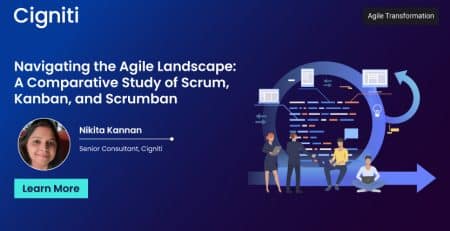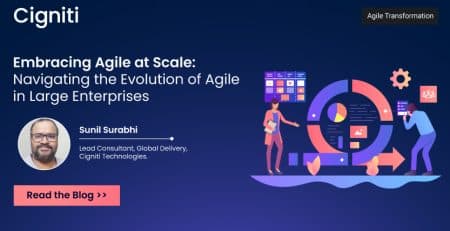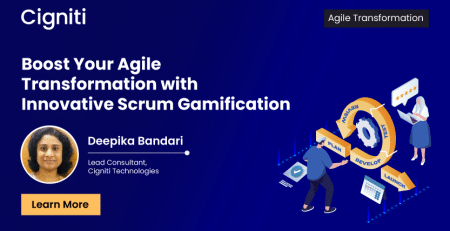SAFe vs LeSS Framework: Which is the best fit for your Organization?
Agile welcomes changes in requirements, even late in the development process. The focus is on delivering a product that provides the most value, and changes are opportunities for improvement. Organizations in continuous transformations and transitions favor agile.
Every organization targets a Mature Agile state and a high-performing Agile team and adopts an Agile framework for better alignment with business needs. The most popular Agile framework is the Scaled Agile Framework (SAFe), which is designed to scale agile and Scrum practices to larger organizations and, at times, tailored to address business goals and organizational needs.
Let’s explore the difference between the two frameworks and decide which would best fit your team.
Scaled Agile Framework (SAFe)
SAFe is a comprehensive system designed to help large organizations implement agile methodologies and lean practices. SAFe provides a set of organization and workflow patterns intended to guide enterprises in scaling lean and agile practices. It offers a flexible and modular framework that can be customized to fit an organization’s specific needs.
Critical components of SAFe include:
- Lean-Agile Principles: SAFe incorporates concepts such as value stream mapping, limiting work in progress (WIP), and prioritizing high-value features.
- Agile Release Trains (ARTs): ARTs are teams of Agile teams that plan, commit, and execute together. They deliver value in a value stream.
- PI (Program Increment): SAFe uses the concept of Program Increments, which are time-boxed planning intervals during which an Agile Release Train delivers incremental value in the form of working, tested software and systems.
- Roles: SAFe defines various roles such as Release Train Engineer (RTE), Product Owner, Scrum Master, and System Architect, among others. These roles help in the coordination and execution of work at scale.
- ART Backlog: It is a prioritized list of features, enablers, and other work items for a specific Agile Release Train.
- SAFe Principles: There are nine SAFe principles that guide organizations in implementing Lean and Agile practices.
According to the survey, SAFe is the most popular framework for Agile scaling. 37% of Agile practitioners use SAFe, all focusing on value streams and having well-defined guides and procedures.
Large Scale Scrum framework (LeSS)
LeSS, which stands for Large Scale Scrum, is a framework for scaling Agile and Scrum principles in large organizations. LeSS is designed to help organizations apply Scrum principles and practices when multiple Scrum teams need to work together. LeSS is available in two variants: LeSS and LeSS Huge. LeSS Huge is designed for larger organizations with more than eight teams, while LeSS is for 2-8 teams.
Critical components of LeSS include:
- LeSS is fundamentally based on Scrum’s principles and practices. It retains the core Scrum roles, events, and artifacts.
- In addition to the base LeSS framework, there is also the LeSS Huge framework, which guides scaling Scrum for organizations with multiple teams. It introduces additional structures and roles to coordinate and facilitate collaboration among teams.
- In LeSS Huge, Area Product Owners might be responsible for specific product areas.
- In LeSS Huge, an Overall Retrospective involving representatives from all teams is conducted at the end of a release.
Key Differences Between SAFe and LeSS
| SAFe | LeSS | |
| Framework Basis | It is a prescriptive and structured framework that includes roles, events, and artifacts at each level. It provides a comprehensive set of guidelines and practices. | LeSS is minimalistic and follows the principles of Scrum at scale. It is based on keeping things simple and relying on the core Scrum framework. |
| Scaling Approach | SAFe employs a hierarchical structure with multiple levels, including the team, program, large solution, and portfolio levels. Each level has its own set of roles, ceremonies, and artifacts. | LeSS focuses on scaling by descaling. It recommends simplifying organizational structures and reducing complexity. |
| Roles | SAFe introduces additional roles, such as Release Train Engineer (RTE), System Architect, and Product Owner at the program level, and Solution Architect and Portfolio Manager at higher levels. | LeSS sticks closely to the core Scrum roles of Scrum Master, Product Owner, and Development Team. |
| Artifacts | Artifacts like the Program, Solution, and Portfolio Backlog manage work at different organizational levels. | LeSS relies on Product Backlog, Sprint Backlog, and Increment. |
| Decision-Making | SAFe includes a top-down decision-making structure, especially at higher levels where a central body might make decisions. | LeSS promotes decentralized decision-making and encourages self-managing teams. |
| Philosophy | SAFe is seen as more of a “Big Picture” framework, providing a comprehensive and structured approach to scaling agile practices. | LeSS is focused on reducing organizational complexity and preserving the core principles of Scrum. |
Which Framework is Right for Your Team?
Ultimately, the choice between SAFe and LeSS depends on the team size, the complexity of the project, and organizational needs. SAFe may be preferred in larger enterprises with a preference for a more structured and prescriptive approach. At the same time, LeSS may be suitable for organizations looking for a more minimalistic, agile, and decentralized scaling approach. It may be helpful to experiment with both frameworks on a smaller scale and assess which aligns better with your organization’s goals and culture.
Cigniti’s “Advisory and Transformation Services” are focused on helping clients assess their Agile maturity, choose the proper framework to align their Agile processes, and achieve improved business outcomes at the enterprise scale. Cigniti has a very organized Process Asset Library that contains robust PMO processes, guidelines, and templates, which are utilized extensively in managing an Agile PMO.
Need help? Contact our Agile Transformation experts to learn more about Agile frameworks and choose the best fit for your organization.





Leave a Reply